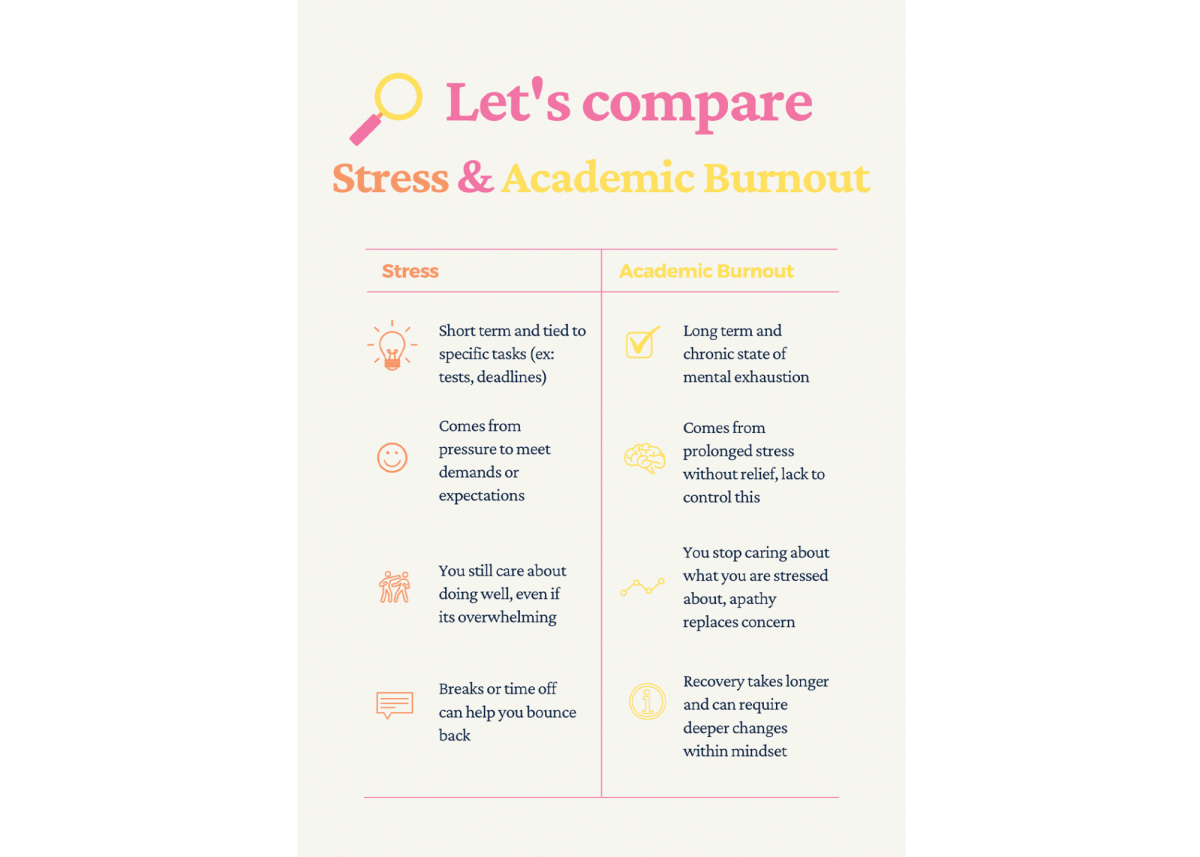To Learn or to Earn: The sacrifices students make to deal with the rising cost of education
November 8, 2019
Time is ticking and graduation is right around the corner. For many, this means moving on to big universities or daunting colleges. Every day is spent worrying about what the future will be like. There are constant doubts about whether or not you’re making the right decision. Your mind is filled with questions that you still can’t seem to find an answer to. You may be thinking, “Are my grades high enough? Am I taking the right classes? Are my college apps good enough?” However, before you can even start worrying about being accepted, a sudden thought appears; “Can I even afford college?”
With a rigorous class schedule and added pressure on college applications, it’s hard for high school seniors of 2019 to deal with the amount of money that their education really costs. College tuition fees have increased to the point where money will constantly be a problem that seniors will have to face, but is the high cost of college really worth the price?
Dating back to 1875, The New York Times reported that the amount of money fathers had to pay for their sons in one year was more than they spent themselves in the entire four years of their college course. Now, almost 150 years later, it is no surprise that the price of college has nearly doubled.
According to CNBC, in 2017, students at public four-year institutions paid an average of $3,190 in tuition for the 1987-1988 school year, with prices adjusted to reflect 2017 dollars. 30 years later, that average has risen to $9,970 for the 2017-2018 school year. That’s a 213-percent increase.
An increase in tuition costs means an increase in student debt, and student loans are making up the biggest chunk of the United States’ non-housing debt. Even in 2012, 71 percent of graduates from four-year colleges carried debt, with students at public schools owing an average of $25,550 and those with degrees from private colleges owing an average of $32,300, according to CNBC in 2017.
Because of this, researchers have associated high student debt with lower values of college degrees. Dominique Baker, Ph.D., a professor of education policy at Southern Methodist University, pointed out that students who don’t see the benefits of a college degree are the ones who don’t complete a credential and have lower balances, and this student debt problem is causing them to struggle a lot more in school. Fear of student debt could also discourage students from enrolling in school, even if borrowing money for a short time can help them in the long-term.
One of the reasons for this increase is that the U.S. spends more money on college than other countries. According to The Atlantic, Americans spend about $30,000 per student a year — nearly twice as much as the average developed country. Because of this, students have to pay a lot more in return in the U.S., compared to other countries.
However, Andreas Schleicher, the director for education and skills at the Organisation for Economic Co-Operation and Development (OECD), said that this is not a good thing. “The U.S. is in a class of its own,” Schleicher said. “Spending per student is exorbitant, and it has virtually no relationship to the value that students could possibly get in exchange.”
What’s even more surprising is that there’s only one country that spends more per student in the U.S. — Luxemburg. In fact, a third of developed countries offer college free of charge to their citizens, according to The Atlantic in 2018.
But why is the U.S. so different? It is important to understand that spending money on college is different from buying other things with money. College is a service, not a product, and its cost doesn’t change with the improvement of manufacturing technology in today’s society. One peculiarity of America’s higher-costing education system is that there are different education systems that combine into one: the public college system; the private, nonprofit institutions and the for-profit institutions.
The biggest and most populated one is the public college system, which is funded by state and local subsidies, and most importantly, student tuition. The main reason for the high cost of public colleges are economical, with steep cuts in public education funding since the 2008 recession. Now, with colleges not having enough money, they have become more entrepreneurial. Because of that, increases in quality with every increase in cost of tuition is not guaranteed.
The effects of this increase in college tuition have taken a toll on not just the students, but also their families. In her book titled “Indebted,” Caitlin Zaloom, a professor at New York University, conducted 160 interviews with families who are taking on debt to pay for college to see what they have to face. One of her findings was that family members often feel like they would be a burden to each other because of potential problems of the current college financing system. Zaloom also found that this especially causes distress for middle-class families, which make up just over half of the American population, according to the Pew Research Center in 2016.
“I think that one reason middle-class parents stay silent about their finances is that they feel vulnerable, in terms of their social standing,” Zaloom said. “When families face financial difficulties, that makes them feel like they may fall out of the middle class and like they won’t be able to do what people like them are supposed to do — for instance, to be able to send their kid to a college that’s a good fit or to be able to retire securely. So that silence about money is a kind of last resort for shoring up a faltering middle-class identity.”
This silence about money has ended in an inability to act to improve financial situations. Some students have found themselves ashamed of seeking help at school, making their financial problems even worse.
Senior Autumn Arnold knows first hand what it’s like to be stuck in this situation. “It’s just not something you want to talk about, because going from having anything to having nothing is hard,” Arnold said. “I had a home, I had a bed, and now everything’s in my car. Everything just kind of gets ripped away from you and you’re just sitting here like, well now what. I’m a senior in high school. I have to pay for college. I have to think of where I want to go to college. I have to find a job. I have to figure all this stuff out, and most students just don’t know how to deal with it. I feel like counselors [should] just extend that hand and be like, ‘Hey, it’s okay to talk about these things, we’re here to help.’ I feel like our counselors are really busy with scheduling stuff and students’ schedules, compared to the actual one-on-one help with college.”
However, the real struggle is finding opportunities to lessen the financial burden. At Lincoln Southeast High School, one of the most popular financial-aid opportunities is the Free Application for Federal Student Aid (FAFSA), which looks at a students’ financial situations, like their parents’ income, and gives them an estimate of how much money the government can give them. However, opportunities for student aid like the FAFSA are not widely advertised for high schoolers, and they have to seek it themselves.
“You really have to dig for it,” Arnold said. “It’s really hard to find at Southeast. It’s one of those things where you kinda have to go to the counseling office and be like, ‘Hey, I need help, please help me.’ There’s not really any posters anywhere, and there’s nothing in the announcements for financial aid or anything. We have senior meetings that tell us that the lady that helps us fill out the FAFSA is only here on Wednesdays and you have to schedule an appointment and you don’t know until that day, on that Wednesday, when that appointment is going to be. It’s not really on the announcements, and they’re not really advertising the FAFSA meeting.”
With students not knowing about specific information that may help their financial needs, they begin to fall behind in school as well. In order to make money to afford college or even pay for everyday needs, most students get jobs during school. Because of this, they are left with the task of balancing their priorities, which is incredibly difficult. This usually leads to students falling behind on academics, which is important when thinking about college. It’s an ongoing cycle of juggling responsibilities, and this can be hard with college applications on top of that.
“Some will get caught up in that job… and their grades will start to slip. I have friends that have gotten so caught up in working that they forget that they have to go to school, but in college, it’s kind of one of those things where you have to choose now,” Arnold said. “You’re now paying for these classes, so it’s more of an incentive to go, but you also want that money from your job, so you learn to manage your time. You have to sit down and look at everything from a bigger picture.”
Along with looking at everything from another perspective, you also have to take the initiative to seek financial-aid opportunities and college information. One way is to look at different scholarships, no matter how small or odd it may be. There are scholarships for being vegetarian and left-handed, and it all adds up in the end. Another way to deal with these financial burdens is to sit down and talk to someone, regardless of who it may be.
With an ongoing trend of rising prices of college tuition, seniors are left with the burden of trying to figure out some way to raise money to counter the cost. College will be a completely new experience, and it may be hard to adapt to and get ready for. You start to become independent, and learn how to make your own decisions. It puts you in a situation where you have to deal with new struggles that you’ve never faced before. In the end, the cost of college may be great, but it’s up to you to decide whether or not it’s worth the price.










cato • Dec 31, 2019 at 10:52 AM
>The biggest and most populated one is the public college system, which is funded by >state and local subsidies, and most importantly, student tuition. The main reason for >the high cost of public colleges are economical, with steep cuts in public education >funding since the 2008 recession. Now, with colleges not having enough money, they > have become more entrepreneurial. Because of that, increases in quality with every >increase in cost of tuition is not guaranteed.
I feel like it’s important to note here that what’s really driving the ballooning cost is the rapid growth of college bureaucracies. By 1996, as the National Review reported, non-faculty (that is to say, not professors) had well outpaced the growth of faculty positions. By 2010, according to the NCES, for every dollar on instruction, there was $1.82 going towards non-instructional expenses. A lipo-suction on college bureaucracies is what’s genuinely necessary to restore accessible college for lower- and lower-middle income students.